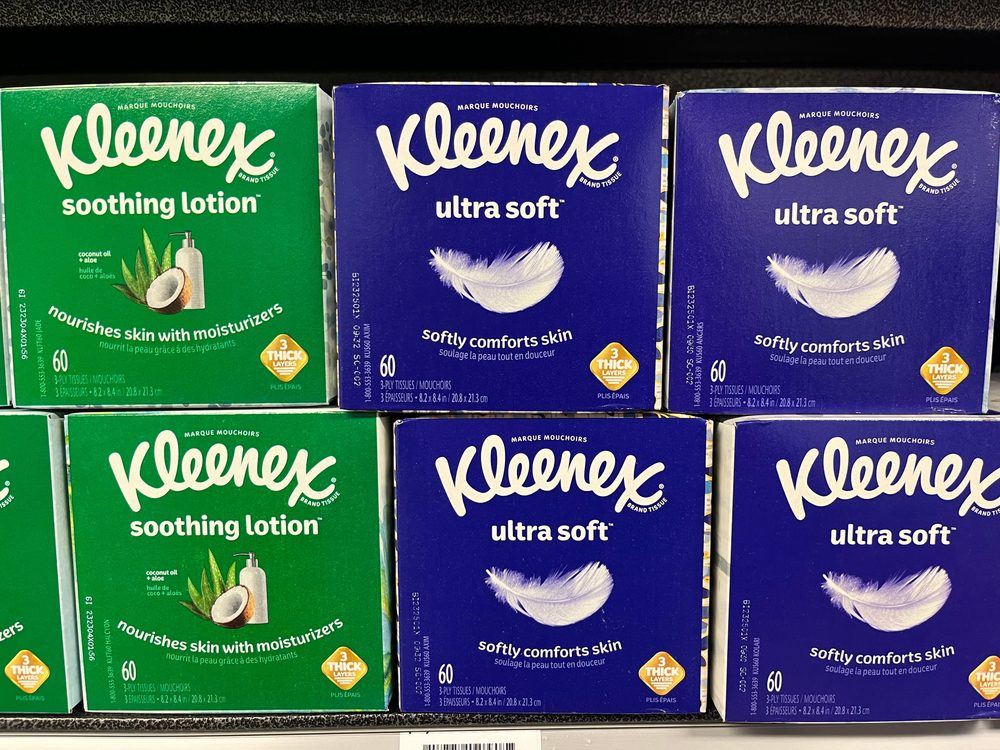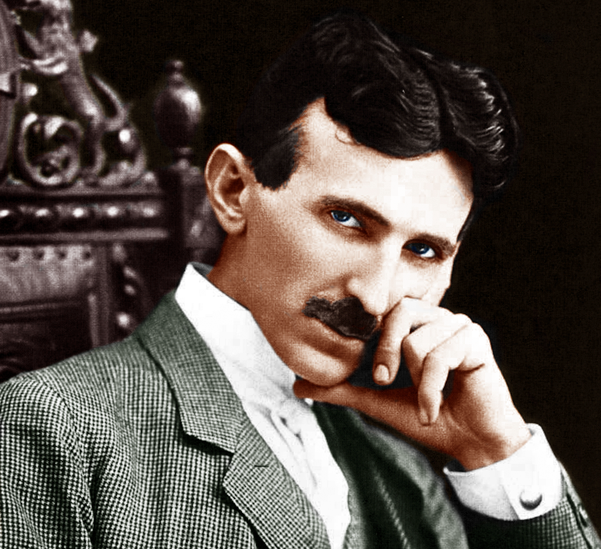Science in The World presents you: World War I inventions that we still use every day!
Even though we can’t say that we’re happy with the millions and millions of people who lost their lives during these dangerous battles, we have to admit that the World War I inventions were pretty great. And they’re still pretty great today.
This war redrew political borders, and people wishing for success were determined to step up their tactics. As you can imagine, they came up with impressive and modern weaponry that was made to give them an extra chance of winning, such as machine guns and tanks, poison gas, drones, and so many other things.
But these World War I inventions aren’t only weaponry because the worldwide conflict was also a great opportunity to develop some practical innovations, such as trench coats, Kleenex, pilates, blood banks, and other things that we still use today.
Are you ready to talk about these World War I inventions that we still use every day? You might have them in your wardrobe, bathroom cabinet, or on YouTube nowadays. Are you curious already? Then let’s begin!
World War I inventions — here they are!

1. Blood banks
Before the giant worldwide conflict emerged, doctors rarely performed blood transfusions. But when they discovered that there were different blood types and that they could refrigerate it to extend its life, the medical industry was changed for good.
In 1917, Captain Oswald Robertson, a brave man who was a U.S. Army doctor consulting with the British Army, created the first blood bank on the Western Front.
The main objective of his invention was to have a blood supply as close to the front as possible so that wounded soldiers could get much-needed help. It was tough to keep the bleed fresh for plenty of days in a row, but they found a way to deal with this: they kept the important blood on ice for a period of up to 28 days, and in order to prevent clotting, they would add sodium citrate.
That’s how blood banks used to function at the time, and this is one of the miraculous World War I inventions that we couldn’t live without nowadays.
2. Trench coats
In today’s society, trench coats are seen as a fashion staple that no one can live without (I’m talking about fashion enthusiasts), but during the Great War, people weren’t that interested in how good an item looked but rather in how practical it was.
Speaking of which, the trench coat became very popular among British officers during the war because it was incredibly functional. Compared to the clothes that enlisted men had to wear, these new clothing items were different in weight and cut, and they were quickly appreciated by soldiers.
What was great about this new clothing item was the fact that it was also water-resistant, and it did a better job at providing soldiers with warmth and protection from the rain and the chill of the trenches (you can guess where the garment got its name from), and it was the perfect item, especially since the wool coats they had worn before were heavy and were hard to deal with when they got rained on.
But the functionality of the trench coats didn’t stop there, because they also had plenty of rings and flaps for keeping their weapons and map cases safe at all times. A couple of months after the war started, London retailers like Aquascutum and Burberry started to advertise trench coats to the British people.
And what do you say about the fact that one of the most popular and sold-out items from Burberry is still the magnificent trench coat? Well, that surely is one of the World War I inventions that was meant to last a long time.
3. Sanitary pads
Another one of these great World War I inventions we still use today is sanitary pads. In 1914, while they were on a European tour, Kimberly-Clark executives came across a material made from processed wood pulp. The thing that drew their attention was the fact that the material they discovered was about 5 times more absorbent compared to cotton, and it was also around half as cheap to produce.
During WWI, it was difficult to find cotton, so the company came up with the idea of trademarking the creped wadding as Cellucotton, and they sold their supplies to the American military, who needed it for surgical dressing. However, Red Cross nurses discovered that they could use the Cellucotton to create their own sanitary pads.
When the war was over, the military had plenty of Cellucotton surpluses, so the Kimberly-Clark company decided to be smart about it and simply repurchased their products. In 1920, they put their plan into action and launched their first commercial product, Kotex (the name was a combination of the words cotton and texture). Kotex was their brand of sanitary pads, which were made from 40 plies of Cellucotton hand-wrapped in fine gauze.
However, Kimberly-Clark’s journey with Kotex wasn’t exactly simple because drug and department stores refused to stock the product and magazines didn’t want to advertise it. But when the Ladies Home Journal agreed, things completely changed. One of the workers there said that while Kotex was a product invented for one purpose, it ended up having a practical application for another. So yes, sanitary pads are also one of the World War I inventions that women all over the world still use today.

4. Pilates
Have you ever tried a Pilates class? There are plenty of options in every city, and if you don’t like paying for classes, you could try one of the thousands that are available for free on YouTube. The reason why I advise you to try a Pilates class at least once, whether at your local gym or in the comfort of your own home, is that it is one of the World War I inventions that we still use today.
This type of workout was invented by a German bodybuilder named Joseph Hubertus Pilates, who worked as a boxer and circus performer in Great Britain. After the outbreak of the worldwide conflict, he was interned as an enemy on the Isle of Man.
Pilates was a thin kid, and he wanted to build his strength, so he took up yoga, bodybuilding, and martial arts to help him achieve his goal. Given the fact that he couldn’t do all the workouts that he would’ve normally done during the years he was at the internment camp, Pilates created a new set of exercises.
He discovered that he could train both his mind and body, which he believed were connected, with the help of different slow and precise physical movements and stretching, which he called “Contrology”.
He then began to teach his method to his colleagues, helping them rehabilitate and strengthen their bodies. For extra resistance training, he rigged springs and straps to the headboards and footboards and started this new workout regimen.
In 1925, when the war had already been over for a couple of years, Pilates opened an exercise studio in New York City, where he started to teach the fitness techniques he developed while in camp. Eventually, this new type of workout received its last name, Pilates, and is one of the World War I inventions that we still use today. It is also one of the most popular types of fitness training in the world.
Now that you know Pilates is one of the greatest World War I inventions, you definitely have to try it!
5. Zippers
Even though the name zipper came in 1923 when the B.F. Goodrich Company came up with the word, the actual “hookless fastener” is one of the World War I inventions that we still use every day.
It was perfected by Gideon Sundback, and the first huge order of zippers came for money belts worn by sailors and soldiers who didn’t have any pockets on their uniforms.
While buttons were still the convention of military uniforms during those dangerous and deadly battles, zippers started to be sewn into the flying suits of aviators and became extremely popular in the 1920s. Did you know that?
6. Drones
You now see drones everywhere, from influencers trying to produce unique content to new war weapons and aids, like those you’ve seen used in the war between Ukraine and Russia. But did you know that drones are one of the World War I inventions that people still use today?
Less than 15 years after Orville Wright soared over the impressive dunes of Kitty Hawk, he took part in the first unmanned aircraft tests conducted by the American military
Charles Kettering was a smart man who supervised all these experiments, and in 1918, he managed to test an unmanned aerial torpedo that was able to strike a target at a fantastic distance of 75 miles.
The “Kettering Bug” used a basic dolly and track system to launch itself, and it consisted of cardboard wings and a papier-mâché fuselage. Besides that, in order to function, the drone needed a gyroscope and a barometer for guidance. However, the battle ended before the drone could be ready for the fight. But that’s not a problem because drones are one of the World War I inventions that people all over the world use today.
7. Daylight saving time
When the month of November comes, the majority of Americans gain an extra hour in their day, and then they lose it again in the following March. Even though the idea of shifting time is not new, in April 1916, Daylight Saving Time was first implemented in Germany.
The reason they did so was a wartime measure to conserve coal thanks to the fact that they had an additional hour of daylight in the evenings. A couple of weeks later, many European countries, including the United Kingdom, followed what Germany did. The United States didn’t join the party immediately, and they introduced Daylight Saving Time in 1918.

8. Kleenex
Let’s go back to the Kimberly-Clark company because Kotex wasn’t the only popular product they developed from Cellucotton. After they experimented with a delicate and flattened version of Cellucotton for potential use as a gas mask filter, the company came up with a different idea.
In 1924, the company launched a new brand called Kleenex, which was marketed as a disposable cold cream and makeup remover. The company liked to play with words, and the name of their new product actually came from the word clean as the base one but employed the K and the ex from their other iconic product, Kotex.
After a while, women started to complain that their partners were blowing their noses in their Kleenex, and Kimberly-Clark listened to their complaints. The company repositioned the tissue as a handkerchief alternative that prevented the spread of bacteria and germs.
Did you know that Kleenex was one of the World War I inventions that people still use today?
9. Stainless steel
Another one of these World War I inventions that we still use today is stainless steel. When the war was going strong, the British military was looking for harder alloys for their guns so they would be less likely to deteriorate from the friction and heat of firing.
Harry Brearley, a smart English metallurgist, discovered that if he added chromium to molten iron, it would produce steel that wouldn’t rust. Even though stainless steel wasn’t used for guns, there were many World War I inventions that used this new material and made it popular: mess kit silverware, aircraft engines, and medical instruments.
Did you know about these World War I inventions?
10. Wristwatches
You now see a lot of men wearing wristwatches to tell time or to be fashionable, but before WWI took place, these accessories were worn almost exclusively by rich women who wanted to be in fashion.
During those times, the majority of men used pocket watches on chains to tell the time. However, they soon discovered that those accessories weren’t exactly practical in trench warfare, so they needed something new.
Even though wristwatches aren’t technically World War I inventions, they were adopted by men while the battle was on because it was easier to wear them instead of always taking the watch out of the pocket, especially in the heat of the battle.
For officers who needed both hands to carry a sidearm and a whistle, a wristwatch was exactly what they needed. This item was also the best thing ever for aviators, given the fact that they needed both hands at all times. After wristwatches proved their functionality in warfare, they were accepted by everyone and became true men’s fashion accessories.
11. Machine guns
Okay, can you even imagine a worldwide war without machine guns? Nobody can, and that’s why high-capacity, hand-cranked, and rapir-firing firearms have been a war staple from the Civil War on.
But one of the most popular World War I inventions was the machine gun. The one who brought them to life was Hiram Maxim, a talented American inventor who designed a single-barrel and portable machine gun in the 1880s. His inventions were so appreciated by the military that both sides used them during WWI.
These new “manly toys” that are some of the most popular World War I inventions forced enemies to dig hundreds and hundreds of miles of trenches, with a dangerous “no man’s land” in between, where the military forces could get mowed down.
The American forces were a bit confused by this new tactic at first, because they had been trained in tacts of mobile warfare, where they were always advancing. Even though they were a bit concerned about how they were going to get out of the trenches, they had to figure things out because the fight was like nothing else they’d witnessed.
12. Submarines
Yes, submarines are other World War I inventions that people still use today. Experts say that using submersible vessels to attack enemy ships is a war tactic that goes as far back as the American Revolution.
But WWI changed many things in people’s lives, and it was at that moment that submarines started being used in large numbers as part of different and difficult naval operations.
Germany was the first country to utilize submarine technology to its fullest, and they attacked Allied shipping in the Atlantic and also sank the British ocean liner RMS Lusitania. The operation took place in May 1915 and they killed 1200 people, including 128 Americans.
The US was not happy when they found out that more than 100 of their people were killed during an attack, and their complaint made Germany shift pretty much all of the submarine attacks elsewhere.
However, the Germans didn’t follow the request, and in 1917, they restarted the attacks and sank plenty of American vessels, with experts saying that this was one of the main reasons for the United States entering the war.
Did you know about these World War I inventions that we still use today? Speaking of, which one of these World War I inventions do you think is the most popular nowadays? Leave a comment below and let us know what you think!
If you’re curious about other World War I inventions or you simply want to know more information about the first battle that changed the world, I recommend you check out this book because it’s full of insights and key information! The name of the book is “The First World War: A Complete History,” and you can find it on Amazon for a very good price!
If you want to read something else from us, I recommend you check out this article. It’s not about World War I inventions, but it still contains something specific to wars: What Happens to Your Body After a Nuclear Bomb Hits?















9 Responses
Sorry, but I must disagree with the 12th invention being a WW1 invention. During the War Between the States, the CSN (Confederate States Navy) built a fully submersible ship the CSS Hunley. It was used to attack Union ships blockading a southern port (I can’t remember which one off the top of my head.). Unfortunately, it was lost after its first (and only) mission.
I believe there was an attribution to the American Revolution in item 12, long before the Civil War.
happy it got lost
Nah it has been found. The Hunley is being conserved as an important war artifact in a conservatory near Charleston SC. The remains if the sailors were interred in a nearby military cemetery.
I thought versions of the submarine were actually invented in the 1800s saw
thanks
My father was 7 years old when the Wright Brother’s first flew. He said it was a sensation among his school mates. They tried to imagine where this was leading. “Play Flying” became The Childhood Game!
I have a new invention to publish
thank you very much. Who knew that.